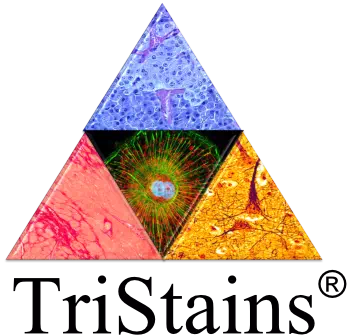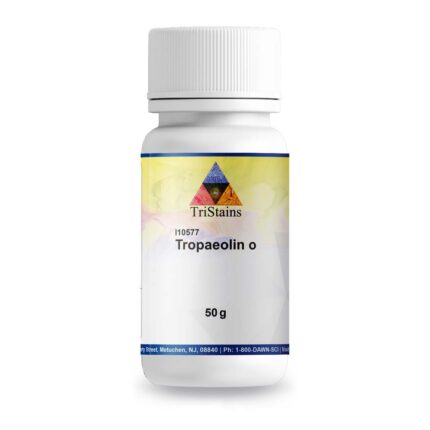Buy Hydroxy naphthol blue disodium salt (165660-27-5) MF: C20H12N2O11S3Na2 | MW: 598.49. Get High Quality Hydroxy naphthol blue disodium salt (165660-27-5) from Tristains.
Hydroxy naphthol blue disodium salt is a dark blue to purple-colored compound. It is highly water-soluble and dissolves readily in aqueous solutions. It is commonly provided in the form of a disodium salt for improved solubility and stability.
It belongs to the class of azo dyes and is derived from naphthalene.
“TriStains”, Biological Stains that offer range of stains used in Histology, Cytology, Microbiology and Hematology laboratories.
TriStains meet the highest quality standards and give excellent color performance of desired components of cells and tissue in life science laboratories.
TriStains series products are carefully tested to ensure accurate, reliable, and reproducible results. Our products are available in different packaging sizes to allow you to get all types of stains & Indicators for your specific purposes from a single source.
In-addition Tristains also deals in numerous Laboratory Supplies, Chemicals, Equipment, Instruments, Reagents, Standard Solutions, Buffers, Biological Stains & Indicators and many more, for more information please visit our website www.tristains.com or email to [email protected] we will be happy to help you. All Tristains Products are exclusively distributed by Dawn Scientific Inc (https://dawnscientific.com)
Applications :
Biological Stain: Hydroxy naphthol blue disodium salt has been used as a biological stain in certain applications. It can be employed to visualize specific tissues or cells in histological studies or to detect the presence of certain biological components in assays.pH Indicator: Hydroxy naphthol blue disodium salt can also function as a pH indicator, although it has a relatively narrow pH range for color change. It transitions from red to yellow in the pH range of approximately 6.2 to 8.0. It can be used to monitor pH changes within this range in various chemical and biological systems.Dyeing and Textile Applications: Due to its intense blue color, Hydroxy naphthol blue disodium salt is used as a dye in the textile industry. It can be applied to dye fabrics, papers, or other materials to achieve vibrant shades of blue or purple.Metal Ion Indicator: Hydroxy naphthol blue disodium salt is widely used as a metal ion indicator in analytical chemistry. It can selectively bind to certain metal ions, forming colored complexes. The formation or absence of these complexes can be used to detect and quantify specific metal ions in solutions.Educational & Demonstrative Uses: Hydroxy naphthol blue disodium salt is often utilized in educational laboratories and demonstrations to teach various scientific concepts. Its distinctive color change and solubility properties make it suitable for engaging students in experiments related to pH, complexation reactions, and metal ion detection.














Reviews
There are no reviews yet.